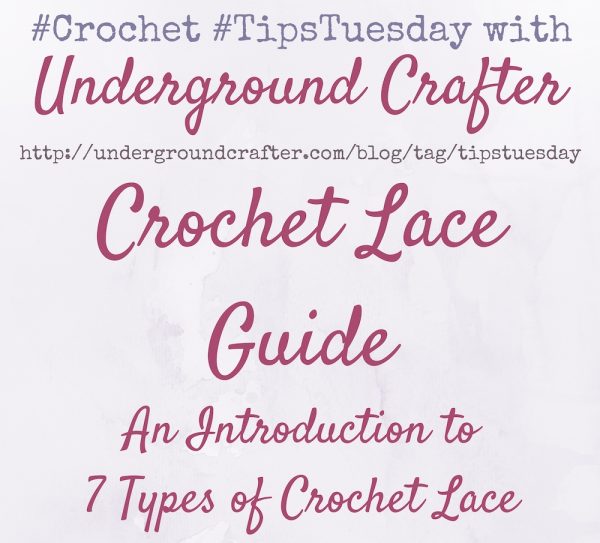 A few weeks ago, I shared four tips to keep you crocheting in the heat of summer, and today, I’m adding another: working with crochet lace.
A few weeks ago, I shared four tips to keep you crocheting in the heat of summer, and today, I’m adding another: working with crochet lace.
Summer is the perfect time to explore the many varieties of crochet lace. You can make stunning projects and learn new skills at the same time! In this post, I’ll be talking about seven different types of lace and sharing patterns, tutorials, books, and classes to help you get started.
This post contains affiliate links. All pattern images are copyright the respective designer and are used with permission.
Broomstick Lace
Broomstick lace is made using a broomstick handle or large knitting needle and a crochet hook. Get started with my free crochet pattern and tutorial, Quadrilateral: A Broomstick Lace Shawl.
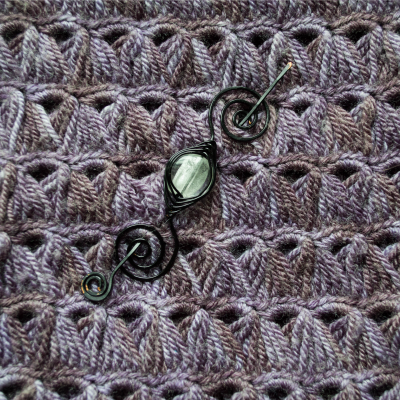
You can take your broomstick lace to the next level in the Craftsy class, Beyond Basic Broomstick Lace, or with Donna Wolfe’s book, Broomstick Lace Crochet: A New Look at a Vintage Stitch with 20 Stylish Designs.
To learn more about broomstick lace, check out these posts:
- Free crochet pattern: Broomstick Lace Mug Hug
- Guest Post: Donna Wolfe Tells All About Broomstick Lace
- Roundup: 7 Free Broomstick Lace Tutorials for Beginners
- Roundup: 30+ Broomstick Lace Patterns (Including 20+ Free Patterns)
Bruges Lace
Bruges lace, or Bruges crochet, mimics a style of lacework made famous in the Belgian city of Bruges. Learn Bruges Lace by Ellen Gormley is a great resource, or you can take her online class, Learn to Crochet Lace: Hairpin, Broomstick, and Bruges.
You may also enjoy the Bruges Lace Napkin Ring, a free crochet pattern by StitchesNScraps.
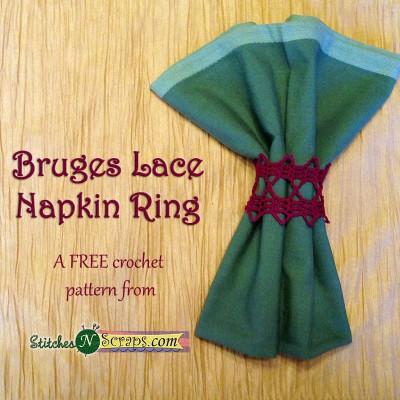 Filet Crochet
Filet Crochet
Filet crochet is a beginner-friendly type of lace using double crochet and chain stitches to form mesh. Filet crochet can be used to create simple or intricate designs. More intricate patterns are usually charted. If you’re new to filet crochet, use Kim Guzman’s tutorials to get started.
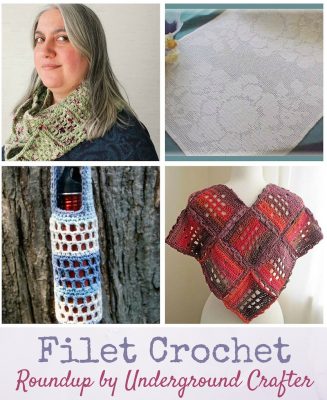 Or, try these four free filet crochet patterns! Clockwise from upper left corner:
Or, try these four free filet crochet patterns! Clockwise from upper left corner:
- Spring Sampler Infinity Scarf by Underground Crafter (that’s me!),
- Elegant Floral Table Scarf by Kim Guzman,
- Diamond Mine Shawl by Kathy North, and
- Stainless Steel Water Bottle Sling by Moogly.
Hairpin Lace
Hairpin lace is a technique where you create loops using a tool sometimes called a hairpin lace loom. This method takes a bit of getting used to since you have to hold an extra item in your hands, but it’s surprisingly simple once you get started. You can learn more about hairpin lace and find links to four free tutorials for beginners in this post, or in this tutorial by Celeste (Shellie) Dunn on AllFreeCrochet.
My favorite hairpin lace tool is the one made by Clover. I shared a detailed review here.
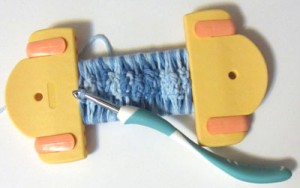
Irish Crochet Lace
Irish crochet lace was developed in the mid-1800s as an inexpensive alternative to Venetian lacework. It was taught by nuns to women throughout Ireland as a form of economic development.
So, what characterizes Irish crochet lace? Typically, motifs are crocheted and then joined on a mesh or lacy background.
The Mayapple Flower Square is one of my most popular free crochet patterns. The center flower is inspired by the traditional Irish crochet rose.
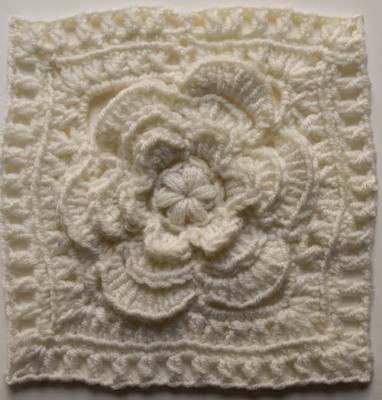 If you’re new to Irish crochet, my favorite resource is The Go-To Book of Irish Crochet Motifs by Kathryn White. (You can read my review here.)
If you’re new to Irish crochet, my favorite resource is The Go-To Book of Irish Crochet Motifs by Kathryn White. (You can read my review here.)
If you’re ready to try an Irish lace garment, you may enjoy Myra Wood’s Learn Irish Freeform Crochet class on Craftsy.
Pineapple Stitch Lace
The pineapple stitch is a common vintage lace motif with many variations. It’s one of my personal favorite forms of crochet lace. I have several free crochet patterns featuring pineapple stitches including…
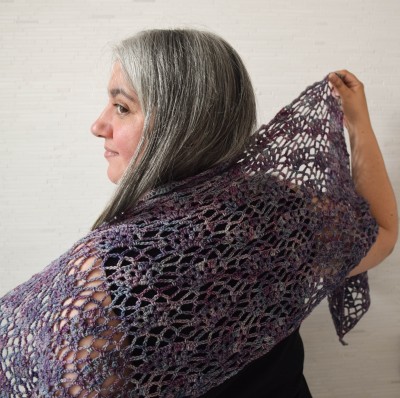
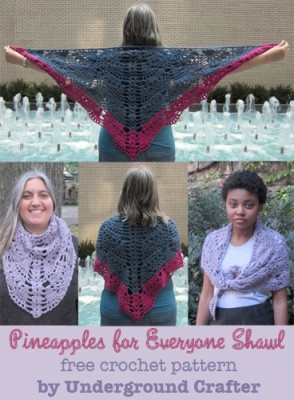
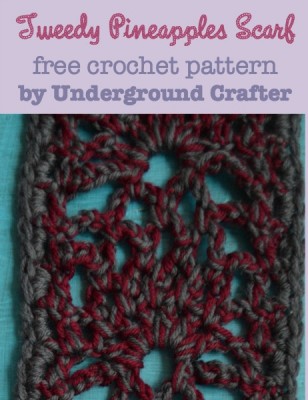
I guess it isn’t really a form of lace, but rather a stitch pattern variation. But it’s a very fun way of playing with lace stitches!
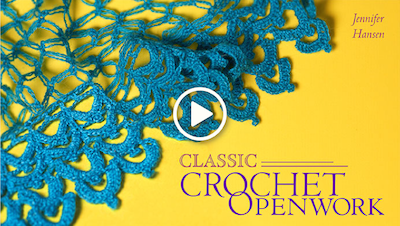
Tunisian Crochet Lace
While some people associate Tunisian crochet with a bulkier fabric, it can actually be used to make beautiful lace. If you’re new to Tunisian crochet, it’s a method using a specialized crochet hook with a stopper on the end because loops are left on the hook for the first part, or “forward” pass, of each row. These loops are then worked off in the second part, or “return pass” of each row.
Kim Guzman has done a lot of work to popularize Tunisian crochet lace. You can take her online Tunisian Cables & Lace class, and sometimes find her wonderful (but out-of-print) book, Learn to Do Tunisian Lace Stitches, used on Amazon. Although it isn’t lace-specific, you can find many lacy stitches in her Tunisian Crochet Stitch Guide, too.
What’s your favorite form of crochet lace?

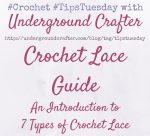
of the techniques you’ve listed, I like doing Tunisian lace most at this point in my life. When I was younger and eyes and hands worked better I enjoyed doing really delicate lace work with very small hooks and light cotton thread. I was really into tatting as well as crochet lace. My steel hook set is from Lee Wards! You have to be ancient to remember that company. LOL!
I’ve downloaded your pineapple shawl and plan to give it a try when my hands are working better. Thanks for the tour!
Oooh, I have never tried tatting, Sandeleh. Thanks for sharing your story!
Sandeleh, thank you for the memories of Lee Wards. The Catalog was the highlight of my teens, 20s & 30s. Then My brother moved to Atlanta, lo & behold they had a Lee Wards Store. Got in on the after Christmas Sale. Luckily there was no weight limit enforced by the airlines, or I would never have been able to get all my bargains back to NY. I have tried shuttle tatting and needle tatting. Being a self taught left handed crocheter, it takes me awhile to convert some patterns for more intricate lacy details, but I manage. Thanks for these details.